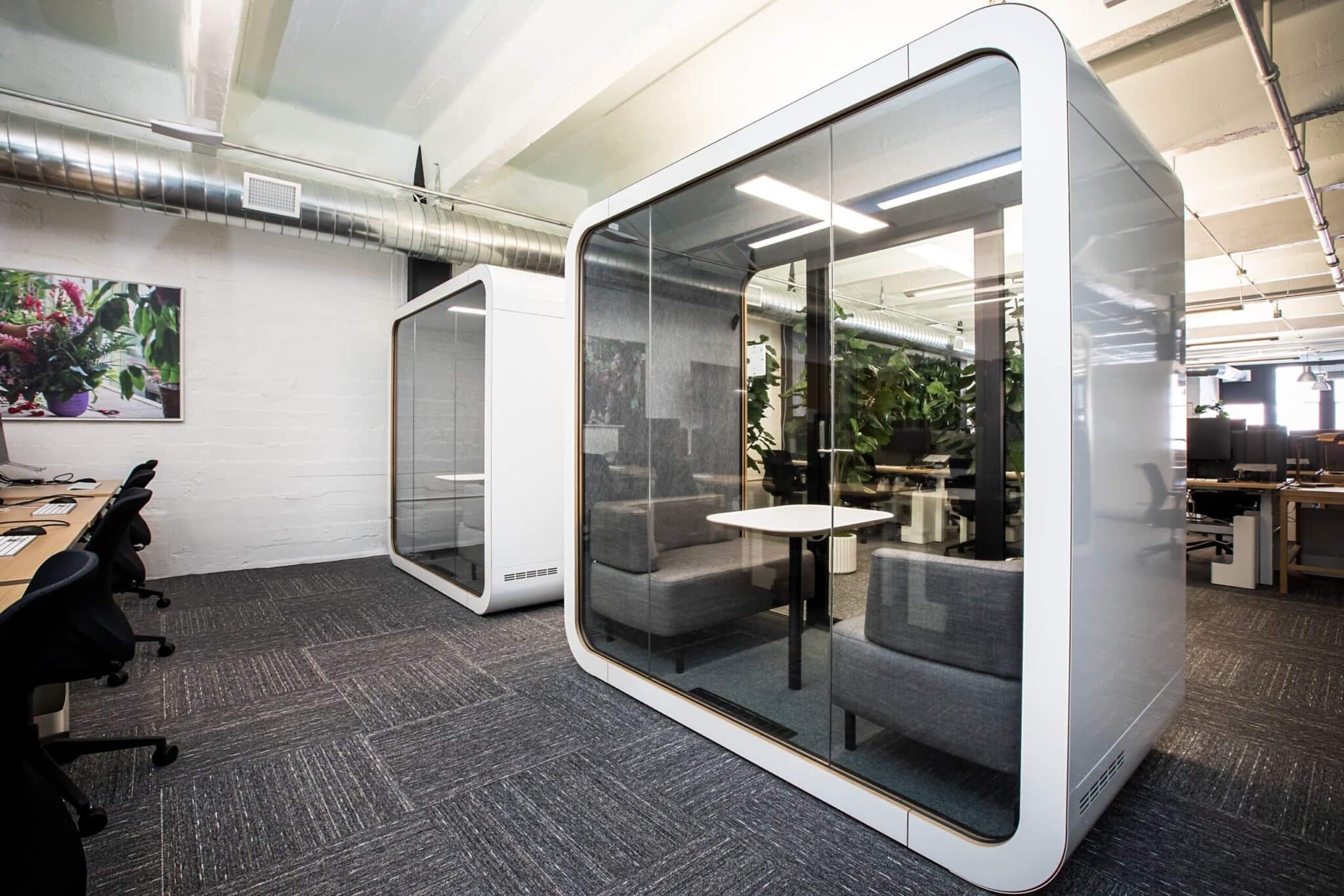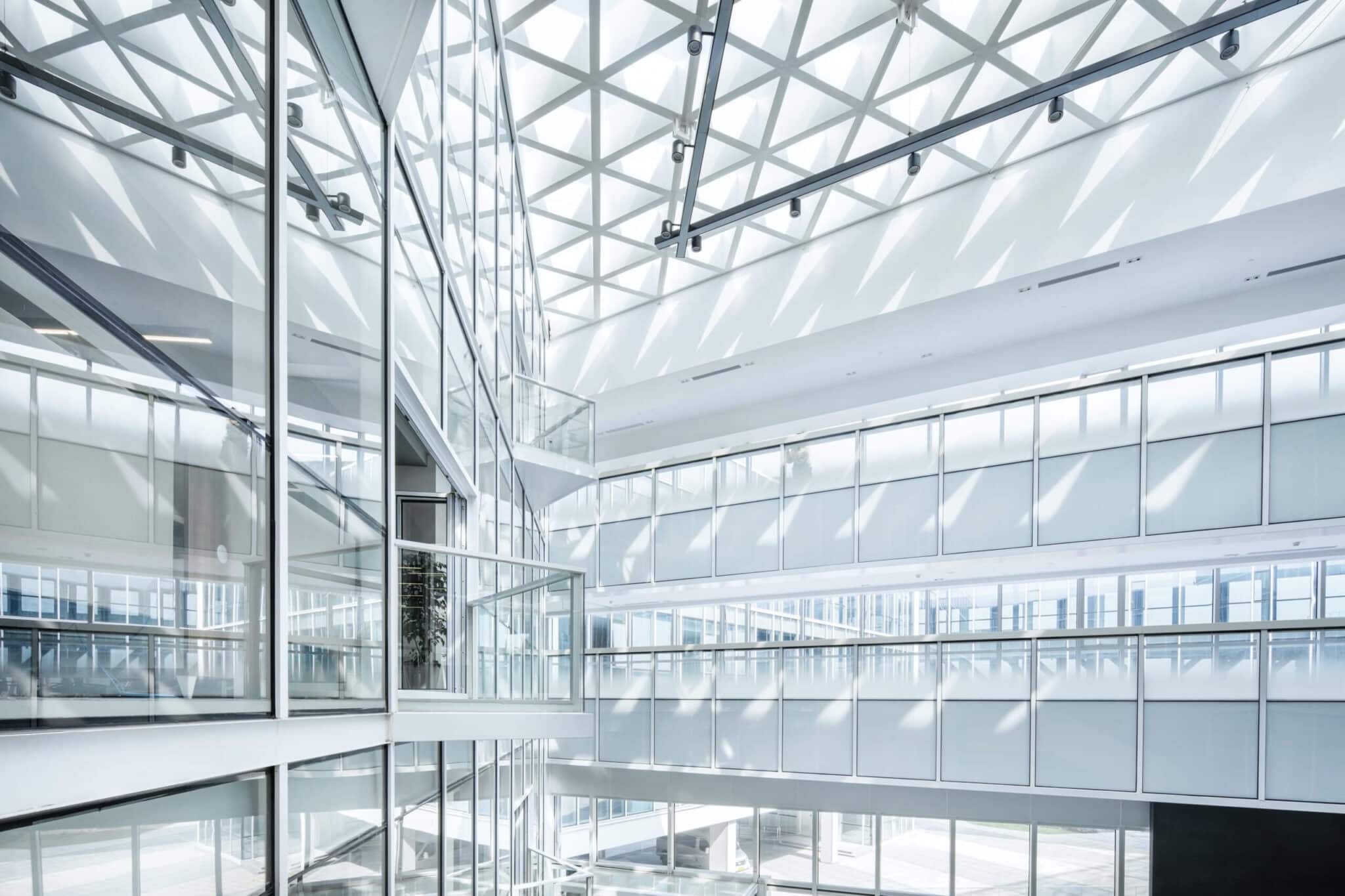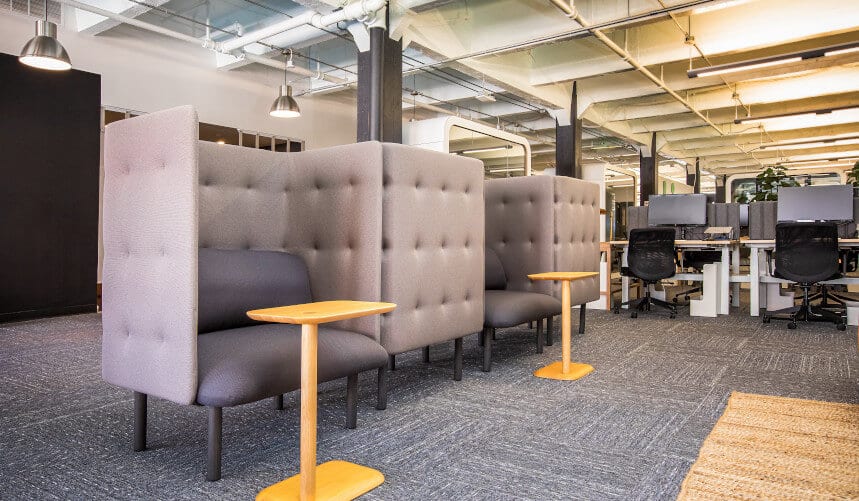Workplace flexibility means more than just working remotely every so often.
These days, it’s a much broader term that not only refers to various employee work styles, but also relates to the physical office work space in addition to the overall building.
Though the terms associated with flexible working remain the same, their meanings have evolved. Flexible working methods like activity-based working, agile working, and coworking have shifted exponentially.
Embracing this flexibility can seem overwhelming, especially if your company used to work in a traditional in-office setting. Still, it can be done in a way that suits your company best.
This article explores the different types of flexibility within a company’s three core physical buckets: Your employees, the workplace, and the building.
Why flexibility is the future of the workplace
If COVID-19 taught us anything, it’s that flexibility is the future of the workforce. Long gone are the days of the traditional workstyles, where employees come into the office at 9 am and leave at 5 pm.
Though catalyzed by the pandemic, the shift to a more flexible workforce has long-term benefits that employers can’t afford to ignore.
A study from Zenefits found that 78% of employees claim flexible work arrangements make them more productive. What’s more, 44% of people say that flexible work arrangements will be a significant consideration when evaluating future job opportunities.
Not only does flexible working give employees the space to be their most productive selves, but it’s something many are considering to be a criterion when considering a job.
With that said, let’s take a look at three different core components of workplace flexibility.

1. Employee flexibility
Remote work has been on the rise for the last decade. In fact, a report from Flexjobs found that remote work has grown by a whopping 91% over the past ten years. Plus, a study from OwlLabs found that 42% of employees with remote work options plan on doing so more often in the next five years.
The bottom line is that employees crave the freedom to work when and where they want and that it yields a positive outcome more often than not.
But remote work isn’t the only core component of employee flexibility.
A few of the workstyles that enable flexible working are:
Agile working
According to the Advanced Workplace, an agile organization is defined as “a business that has implemented specific strategic decisions that enable flexible working, in and out of the physical workspace.” This work style gives employees the freedom to work in a way that’s conducive to maximum productivity.
Activity-based working
An activity-based workplace or workspace (ABW) is a space within an office that directly reflects the work. Activity-based workspaces encourage movement throughout the workday and can cause improvements to employee productivity, engagement, and job satisfaction.
Flexible working
Flexible working allows employees to work where they feel most productive. This allows for enhanced teamwork and facilitates chance meetings and off-topic chats that can snowball into innovative ideas and business decisions.
Mobile working
Mobile working refers to working remotely and not necessarily at home or the office.
Why the shift to employee flexibility in the workplace? There are many benefits of giving people the ability to work on their terms, including:
- Allowing teams to work together in ways that benefit their work styles and accommodate family situations
- Helping teams stay productive without skipping a beat no matter what’s happening in the world
- Giving employees the space to do their best work
- Lowering business expenses
- Reducing your company’s carbon footprint and impact on the environment
- Increasing employee retention
Of course, employee flexibility doesn’t come without its challenges. But when solutions are in place, this type of flexibility can profoundly impact a company’s long-term success and ability to adapt quickly to the changing world.

2. Workplace flexibility
COVID-19 has forever changed how we operate in offices as we once knew them. These days, it’s critical for offices to maintain a certain level of versatility due to the uncertainty of the pandemic.
At the core of this new flexible office is the change to accommodate short-term and team-oriented activities instead of assigned seating and rigid floor plans. Agility is key to creating a work environment rooted in improving business strategy and employee engagement and productivity.
Let’s take a look at the different components of workplace flexibility.
Dynamic workplace
A dynamic workplace includes a combination of furniture and collaborative spaces that can easily be reconfigured to meet an organization’s current needs with the help of technology. This kind of workplace takes on a new role as space for employees to do certain tasks like deep work, learning, and culture-building, rather than being the default work location.
Desk booking
Desk booking, also known as office hoteling and hot desking, is the ability to book a desk, primarily through desk booking software. Facility managers can see who is checked in to which desk, make sure the right people are in the office, and log detailed sanitation reports for the cleaning staff.
Room booking
Room booking provides employees the ability to book a room for meetings or independent work. Also referred to as room scheduling software, good room booking allows employees to easily find the right space for their needs and book it on the spot.
Digital workplace
A digital workplace is a workplace that doesn’t have a primary physical location. This could be an employee’s home or a coffee shop or library, which is the other side of the coin from a physical workplace, which typically refers to a company’s office space.
Flexible seating
Flexible seating is seating that a workplace provides that’s not necessarily assigned to one person. In some offices, employees may use desk booking to book a specific seat or use various spaces as they are available.

3. Building flexibility
As a facility manager, building metrics and operations have always been an integral part of your day-to-day. Now, with the repercussions of COVID-19, understanding the health and safety of your building has never been more critical, and FM software is essential to this understanding.
You could implement various physical distancing and sanitation practices, but if your building’s HVAC system is broken or your building cannot receive proper airflow, your back-to-office safety plans may become null and void.
Not only can a well-maintained building prevent the spread of COVID-19 and improve the employee experience, but it can save your company significant costs.
Let’s look at some of the components of building flexibility:
Occupancy sensors
Occupancy sensors collect data based on occupancy, allowing building owners and operators to optimize real estate through real-time occupancy data using sensors to monitor how a workspace is being used.
Smart building
A smart building uses a building automation system (BAS) to let users control them from a central hub or handheld device, such as a smartphone. A smart building system links together various systems, giving users complete control over several processes simultaneously and allowing for data collection that can lead to energy savings based on insights from data gathered.
Building automation system (BAS)
A BAS is a system that can control a facility’s heating, ventilation, and air conditioning (HVAC), in addition to lighting, security, and other critical building components.
Building energy management system (BEMS)
A BEMS is a system that monitors and controls the energy requirements of a building. An effective BEMS will collect the necessary data and provide information for FMs to make adjustments to the system to use as little energy as possible while maintaining comfort and production levels.
Lease management
Lease management is the management and coordination of real estate leases, including receiving rents from owned facilities and paying rents for leased facilities.
Embrace workplace flexibility for a brighter future
Change is difficult. But what’s more difficult than change? Resistance.
Shifting to a flexible workplace not only gives employees the tools they need to be successful in the immediate future but in the long-term as well. Embracing a flexible office creates a better work environment and experience for everyone.
Curious to see how workplace software can help your team become more flexible? Contact us today to schedule a demo.
Photos: Uneebo Office Design, Standsome Worklifestyle, LYCS Architecture




